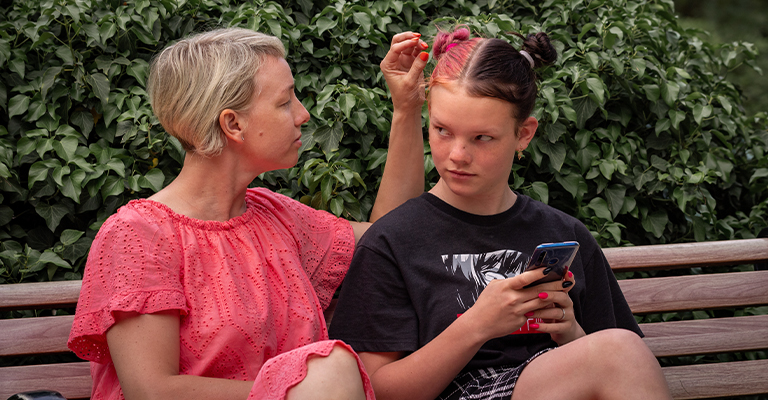- Separation Support
- Counselling
- Mental Health Support
- Relationships and Sexuality Education
- Relationships and Parenting Courses
- First Nations Services
How to build healthy habits with your child online
In today's tech-driven world, managing screen time and fostering healthy online habits for your child can be challenging. Being actively engaged with your child during online activities, rather than letting technology create physical but emotional distance should be the aim. Intentional use of technology together can help children develop valuable life skills, such as empathy and self-regulation, while strengthening relationships.

When work, school, and social life are dominated by online activities, it can be difficult to manage your child’s use of technology, let alone your own.
Technology has come to be somewhat of a “babysitter” for children as many families deal with the demands and busy schedules of modern family life, not to mention the infinite opportunity for entertainment it provides. However long-term use without regulation can create difficulties for parents later, as they try to navigate conversations around emotions, relationships, and internet usage alongside their child’s development.
Interrelate conducted research in 2021 with Deakin University, UTS, and Alan Riva, and found significant benefits to showing kids what a positive relationship with technology looks like, whilst being more hands-on in their approach.
As children spend on average 4.5 hours a day on their screens - finding healthy ways to manage this behaviour is essential to forming healthy relationships between both parent and child, and your child and their devices.
For some, quality time and technology usage are considered non-compatible. Whilst for others, the two may go hand in hand. The benefits of combining quality time with technology use are certainly there, providing there are boundaries in place. The key difference is using devices with your child intentionally and being present together. Essentially it boils down to whether you are being passive or active in how you are using this time with technology together.
Picture this - you’re all sitting around in the loungeroom after dinner, you’re checking work emails, your partner is catching up on social media, and your child is chatting with friends online. You’re all physically there, but you are mentally in different places. Technology has separated your attention from each other.
A more present example of time spent together would be - sitting with your child whilst you both engage in an online activity, whether it be homework, a game, or learning something together. You decide to do this for 30 minutes after dinner - there is a purpose, a timeframe, and presence! Technology is assisting to facilitate this interaction with you and your child and teaching your child valuable skills about regulation and healthy usage.
Technology has the potential to bring family together, providing it is done in moderation and in addition to other relationship building activities. Actively engaging with your child and taking steps to learn about their interests online, is an important step for fostering a deeper connection. Meeting children halfway in their hobbies gives you and your child an opportunity to learn and gives them the chance to teach you something as well.
By allowing yourself to try, fail, and succeed in these shared activities, you not only build your relationship, but you help foster empathy in your child by letting them see you try, fail, and succeed. It reinforces the fact that making mistakes is common, and learning from them, and improving on them, is how we grow. You are helping your child to build a valuable life skill - to manage their own behaviour.
Alan Riva, an expert in the field of presence and mindfulness, noted that being present and engaging in presence exercises with children can build foundations that benefit relationships, both interpersonal and technological. This is especially valuable as kids turn into teenagers, and the relationship shifts from parent-adolescent to parent-teenager.
Making interactions of this manner intentional in your relationship helps to keep the bond strong. It gives your child a safe relationship where they can explore themselves and their limits with more independence and trust.


